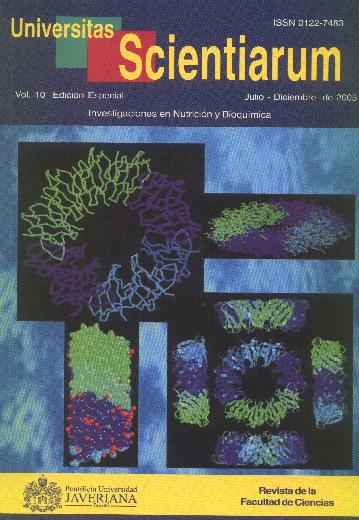Abstract
Dada la importancia del receptor ionotrópico de glutamato activado por N-Metil-D-Aspartato en los procesos de aprendizaje y la formación de la memoria mediados por el transporte de calcio a través del canal asociado a dicho receptor resulta importante desarrollar modelos que permitan comprender la homeóstasis que le permite a la neurona manejar incrementos en el flujo de dicho catión sin llegar a desarrollar procesos necróticos ni apoptóticos. Este trabajo presenta una sencilla simulación de parte de los procesos metabólicos asociados al receptor como un paso inicial para comprender los mecanismos subyacentes al aprendizaje y memoria.Univ. Sci. is registered under a Creative Commons Attribution 4.0 International Public License. Thus, this work may be reproduced, distributed, and publicly shared in digital format, as long as the names of the authors and Pontificia Universidad Javeriana are acknowledged. Others are allowed to quote, adapt, transform, auto-archive, republish, and create based on this material, for any purpose (even commercial ones), provided the authorship is duly acknowledged, a link to the original work is provided, and it is specified if changes have been made. Pontificia Universidad Javeriana does not hold the rights of published works and the authors are solely responsible for the contents of their works; they keep the moral, intellectual, privacy, and publicity rights. Approving the intervention of the work (review, copy-editing, translation, layout) and the following outreach, are granted through an use license and not through an assignment of rights. This means the journal and Pontificia Universidad Javeriana cannot be held responsible for any ethical malpractice by the authors. As a consequence of the protection granted by the use license, the journal is not required to publish recantations or modify information already published, unless the errata stems from the editorial management process. Publishing contents in this journal does not generate royalties for contributors.



